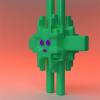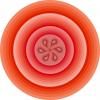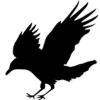Search the Community
Showing results for tags 'Feature'.
-
When I used the eyedropper tool in illustrator, it copied the attributes of the object that I clicked on with the dropper. For example, when I'm making a square of some color, and I want it to have an opacity of x% and a blending mode of Multiply, all I have to do in illustrator is make a square, then eyedrop another shape with those attributes and possibly change the color (all of my stuff involves layers on layers of differently sized shapes with the same blending mode.) In Affinity, is there a way to do this? The eyedropper copies the exact color on the canvas, and when I want to do my layering thing, I have to save the base color on the swatch, then change the blending mode and opacity manually from 100% normal --> 25% Screen or whatever every single time I make a new shape. The styles menu works kinda well, but it's not really the same speed/convenience for me. Thanks for the help!
- 1 reply
-
- Eyedropper
- Tool
-
(and 3 more)
Tagged with:
-
Hello everyone! I would like to request a feature that doesn't seem to be included in Affinity Photo. In Photoshop, you can use an additional key (I think it's alt) to move the opposing crop border as well as the one you're moving with the cursor. This way, symmetryical cropping can be achieved. Can you inclide this feature in a future release? Or is this already included and I just don't know how to use it? On a Mac, cmd would probably make sense since the "Move Tool" already includes that behaviour (mirroring border movement) when using cmd. Best wishes, Shu
-
Hey, In Designer it is already very easy to change Artboard background/canvas color with color wheel to differentiate white shapes from the background. Though, Before exporting you have to change the canvas color back to transparent if you want to export shapes without background. My request would be to add option in export persona to leave modified artboard canvas color out of exported image. This way I could work on artboards with gray/black canvas but export multiple artboards without background. This can already be done by using rectangle shape underneath your artboards, but as you make new artboards you have to rescale the rectangle to fit all artboards inside. It is just a minor inconvenience and the rectangle looks silly filling the gaps between artboards.
-
Good day everybody! To support the huge release of Affinity Photo 1.5 on both macOS and Windows, we have 36 new video tutorials for you that cover most of the new features in great detail. In addition to that, 4 older videos have been revised and updated to match 1.5's new functionality. We hope you enjoy the 1.5 update, it's a beefy one! Here are the videos you need to get started with its new functionality: HDR HDR: Merging & Tone Mapping HDR: Tone Map Presets HDR: Panoramas HDR: Preprocessing HDR: Advanced Editing HDR: Ghosts Removal HDR: 32-bit Editing Tone Mapping Regular Tone Mapping Focus Merging Focus Merging Focus Merge Retouching Focus Merging Bracketed Images Live Projections (360 editing, perspective projection) 360 Live Editing 360 Advanced Editing 360 Retouching 360 Multiple Views Live Perspective Projection OpenEXR support OpenEXR Multichannel Import/Export OpenEXR Import Options OpenColorIO OpenColorIO Setup OpenColorIO Adjustment Macros Macros Macros: Equations Batch Processing Batch Processing Clone Sources Panel Clone Sources Clone Sources: Texture Creation Raw Development Improvements 32-bit Raw Development Raw Colour Quality Automatic Lens Corrections Apply Image Apply Image Apply Image: Equations Equations Filter Equations Filter Dust & Scratches Filter Dust & Scratches Filter Halftone Filter Halftone Scanlines Effect Pixel Art Resizing Pixel Art Resize PSD round-tripping Direct PSD write-back (round tripping) Freehand Selections Freehand Selection Tool Updated Older Videos Discover Raw Development Quality Custom Tone Curve Exporting I hope these all prove useful to you in getting to grips with the new update - if you have any questions please ask.
-
Photoshop is able to differ between the pen and the hand - you can use your fingers to navigate and zoom and the pen for drawing. I think this would be uselful. Thank you!
-
First let me say, I love Affinity Designer so far and am very excited to have a quick, responsive, reasonably priced vector graphics tool available for Mac & Windows. I am currently using the Windows Public Beta and it is already the central tool in my design toolchain. There is one feature I use all the time in Inkscape and pretty much the only thing I find myself leaving Affinity Designer to accomplish, at least in my all-vector work. The ability to take an arbitrary path or set of paths and arrange them along another path. Below are some visual aids from the inkscape manual showing some of the possible uses of this effect: See the manual entry here. And if you want to try it for yourselves, the menu option in Inkscape is as follows: Extensions -> Generate from Path -> Pattern Along Path I would love to see this functionality inside Affinity Designer, and I think many many creative professionals either already rely on this or don't know about it :ph34r: Thanks again for all your hard work. I am (well, have been) a UI/UX designer and find what you guys have accomplished so far to be spot on. I don't think the way Inkscape presents this dialog is as intuitive as it could be, so if you guys decide to pursue this feature, keep that in mind. I like what you've done so far so I won't bias you with my input, but if y'all want any suggestions for how I would work this into the current Affinity Designer interface, I'd be happy to help.
-
Now that we have symbols, replicators wouldn't be far off. Attached is how it works in Modo. You take any item (groups are items too), set it as a master object, activate the replicator tool and create live duplicates of that master. Anything that changes with the master changes in the duplicates as you make the changes. The position of the replicas is basically done with null objects/locators that can be automatically positioned with a formula (to form predefined shapes or cling to bezier node points of an item) or can be placed manually. What I'm doing in the video is just moving the centre point of the master object around, this creates an offset-like effect. replicator demo.mov
- 4 replies
-
- replicators
- feature
-
(and 2 more)
Tagged with:
-
1: UI Standard In AffinityDesign, I need use two hours tagging UI standards in everyone UI page. And In Sketch & Photoshop, use the plugin, Automatically generated UI standard pages just one key. Sketch have plugins: https://github.com/utom/sketch-measure https://github.com/tudou527/marketch Demo: http://utom.design/news/ Photoshop have plugin: http://www.biaonimeia.com/ 2: slice only iOS Image in Android is same name, but difference floder. Export mode is complex and powerful, but I can't use it export Android. we export iOS image, and user other app change image to Android. 3: piexl we get float piexl in center alignment & other layer middle alignment.
-
So recently Adobe XD's Preview 6 introduced 'prototype' mode where you can link different art boards together to have transition between them, as if you were running the design on an app, or website. I was wondering if the Affinity team had any plans to implement this feature or something similar in the future, before or even after official release. For the community would this be something you'd like to see? I'd love to hear what you guys thing. For reference (starts at 11:08): https://www.youtube.com/watch?v=0VHEaVNsNVY&feature=youtu.be&t=11m8s
-
Very MUST HAVE feature, when you are selecting points, they appears in own bounding box, and you can manipulate it like an object — scale, rotate warp (add warp). Just like in 3dsmax. Open 3dsmax and just add many coolest features from there, your app will conquer universe. Just from Edit Poly tool. Add extruding edges — killer feature... Just a lot of basic tools and you will be a king... Also: copying along path, matrix, create object arrays etc.; make instances or copies of objects, make it separate type. Make linked or embedded objects. Would be great to have ability to join many edges to one vertex (but the last is like fantastic)))
-
Hello everyone, I would like to know if there is a feature for packaging Affinity Designer Documents (such as Illustrator or InDesign) in your roadmap. Thank you very much!
-
Hi, sorry if I posted this in wrong place. I thought it would be great to add many character styles for the same part of text (within paragraph). I mean something like CSS classes. Sometimes I need to add i.e. Bold, Color and Small Caps character styles to part of text. With multiple character styles I can have three instead of Bold, Color, Small Caps, Bold Small Caps, Color Small Caps, Bold Color, Bold Color Small Caps. Thanks, Greg
-
-
-
Hello, new user here. I love the program - many of things that I took many steps to do in AI I can do in just a few in AD! I'm loving it! One feature that stands out is mirroring. If you could please add mirroring around - say the centerpoint of a shape. That way one can be sure that the mirrored object is equidistant from a "horizon" point! Much appreicated!
-
Hi Andy and team, it is possible to introduce a 'swap values' switch between the crop tool mode values to easily swap the dimensional values of an image cropping? As an example, say I want an image cropped at 7 x 5. By default when I select the crop tool and select 5 :7 mode, the image dimensions are set as 5 x 7 aspect ration as expected. By introducing this new "swap values" switch between the values or even next to the aspect ration input boxes will allow swapping the values around with a single click of a button. I remember this feature being available in PS CS5 but then I haven't touch PS since then. If your team can introduce this feature, that will greatly help. Thanks, Nana
-
DPX support would be great for compositors like me. Thank you
-
As Adobe has decided to make the import screen in Lightroom suitable for Instagram users, I have concerns wether Lightroom should be replaced in the future. Adobe makes this concerns even bigger by publishing buggy apps too early which ruin lives of professionals. Last year, Serif came out with this Affinity-suite and I have high hopes that they will release a Lightroom alternative. I am serious about that, since Capture One, well, does not work for me. But if you do, make sure that people can transfer 100k photos with any adjustments non-destructively. I don't know if you have plans for this, or if you have resources for this. But if you have, well, I would be the first to buy. Adobe is going for Instagram users with all their iOS-photoshop-mix-fix crap, which is not what professionals want. I know that one day, I will enjoy Affinity Designer on my iPad without compromises. And I hope you guys could rescue the professional photography business. I know this post has not the right spot in the forum, since everything is about Designer or Photo. But I just want to post this to see wether this could be the future of photography. Any name suggestions for a Lightroom alternative?
-
16-Bit would be so much better for printing. especially with gradients as a background. CMYK 16-Bit please. Thanks.
-
Hi Affinity, I currently have two main issues when getting files out for game development. (I appreciate my needs may be different from the crowd and could be at the bottom of the pile on account). Current flow for the majority of my work. -Create artwork using Layers/Groups named with export names. -Use the 'Create slice' from currently selected object. -This works great as it uses the name of the object - good clean files easily understood. However... the size of the slice generated is almost always not what I want. The slice seems to be generated from the bounding box of the object selected (plus all it's children and adjustment layers). If I add a vector mask to the layer/group the slice generated is still of the entire bounding box not the vector mask bounding box. The result is I have to manually resize (sometimes over 100) slices! Feel my pain? Q1. Could the slice generated take the bounding box of a vector mask if it's applied to the object (the one who's name is used)? And if so could it retain the link so that if the mask is resized the slice is resized. That would give me rock solid slices. Export sizes are very restrictive. I often want to export smaller and larger and not always at 1x 2x 3x Currently I'm having to batch files I want smaller through photoplop which brings me out in an itchy rash :) Q2. As a quick-ish fix could there be another tick box which allows users to type in a scale. 0.5 for example? I appreciate everyone at Affinity is working really hard and you get all sorts of requests daily. I've been using Affinity in production now on our games since it's release and exporting has been my biggest hurdle since day 1 otherwise I love it and you guys rock.
-
Just started using Designer, and Photo, this week. Made a quick wish list (feature request grid) sheet on google sheets, Thought I may as well share a public version for people to edit and add their own Wish Items (Feature Requests) to have all in one place. https://docs.google.com/spreadsheets/d/1rilNYZcXRp338ycLsity5Uw4xOXexxfJ3_DKNgzl9WM/edit?usp=sharing
-
I know you can do that in photoshop : CMD + Click on the master "RGB" channel will select highlights. Click again will select more hightlights. is that possible with affinity ? When I go on the channels there is no master RGB channel so I don 't know how to replicate. an idea ? I want the software to detect and select the zone withe most light.
-
Affinity Photo (henceforth "AP") does a stellar job of importing from PSDs, but there are some usability improvements that would help to properly set user's expectations about the nature of the import process. For example, AP appears to rasterize Vector Smart Objects and Embedded Smart Objects into "pixel layers". Fortunately the user can determine the type of an imported layer quite easily by looking at the parenthetical text following its name, but AP's attempt to preserve layer names has the potential to set false expectations at-a-glance, as this image describes: As also noted in the above image, this can have significant usability implications for exporting to PSD, as rasterized layers may keep their default names (as imported by AP), but are in fact be pixel layers within the exported PSD. This confused me the first time I exported to PSD after initially importing from one. There are similar caveats for the layer names of other imported layers. For example: type layers are imported with their names, which suppresses AP's automatic layer naming for type layers based on their text content. It's likely that these layer names originated as auto-generated names in Photoshop to begin with. – Based on these observations, I have a few recommendations in the form of optional PSD import options for layer names: A "PSD Import" option to append " (Rasterized by Affinity Photo)" to the end of layers in a PSD that become pixel layers upon import into Affinity Photo A "PSD Import" option to remove names of type layers if the entire layer name exists as a substring in the type layer's text content, starting from the first character An option to review layers that have been rasterized upon importing a PSD Cheers, Joe



.thumb.jpeg.6f143e8223547aba974205ef53397036.jpeg)










